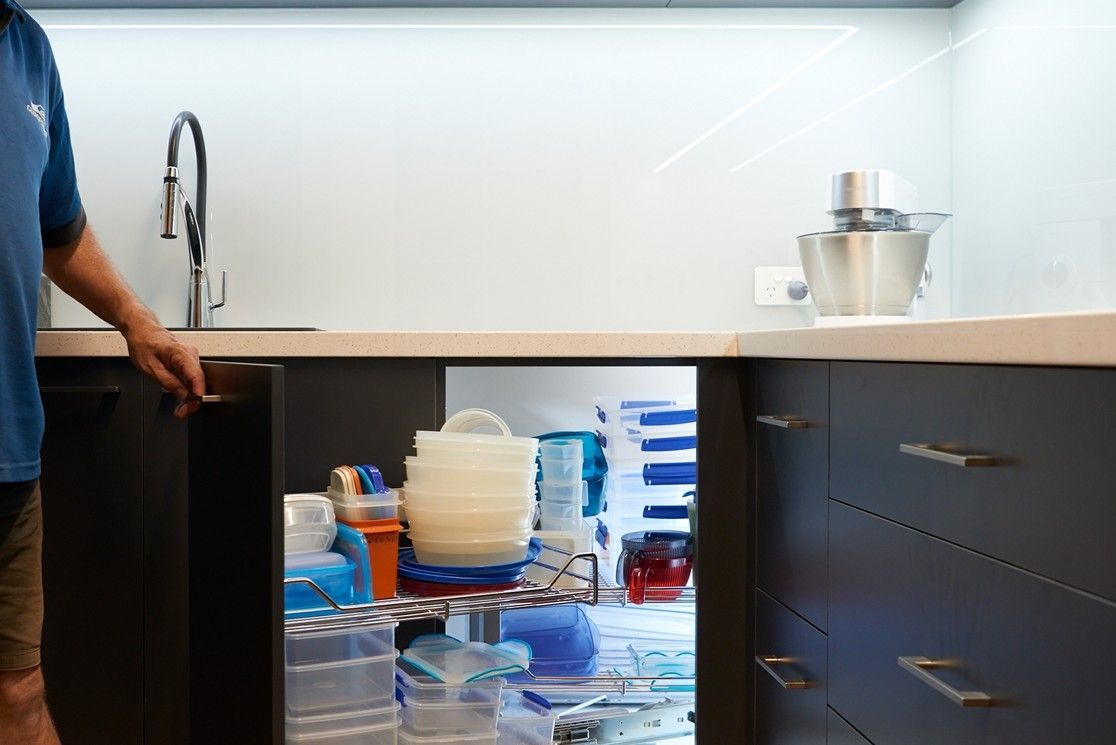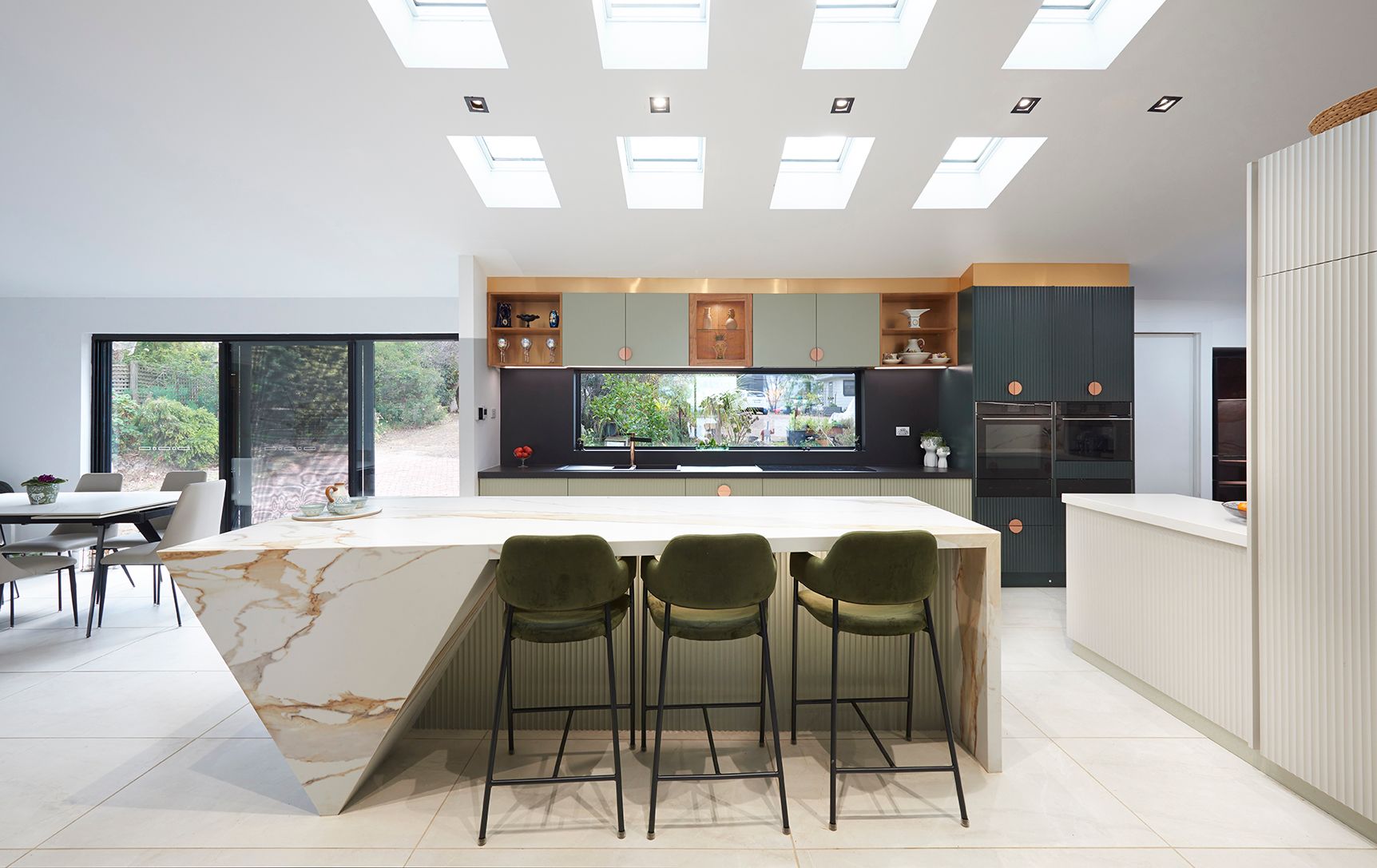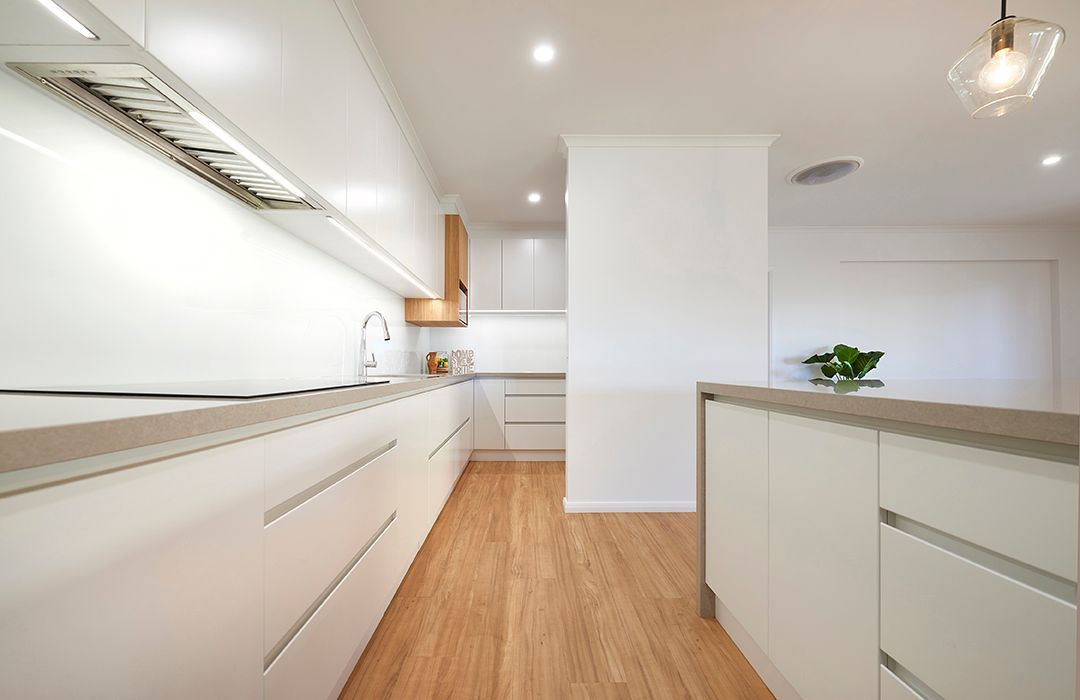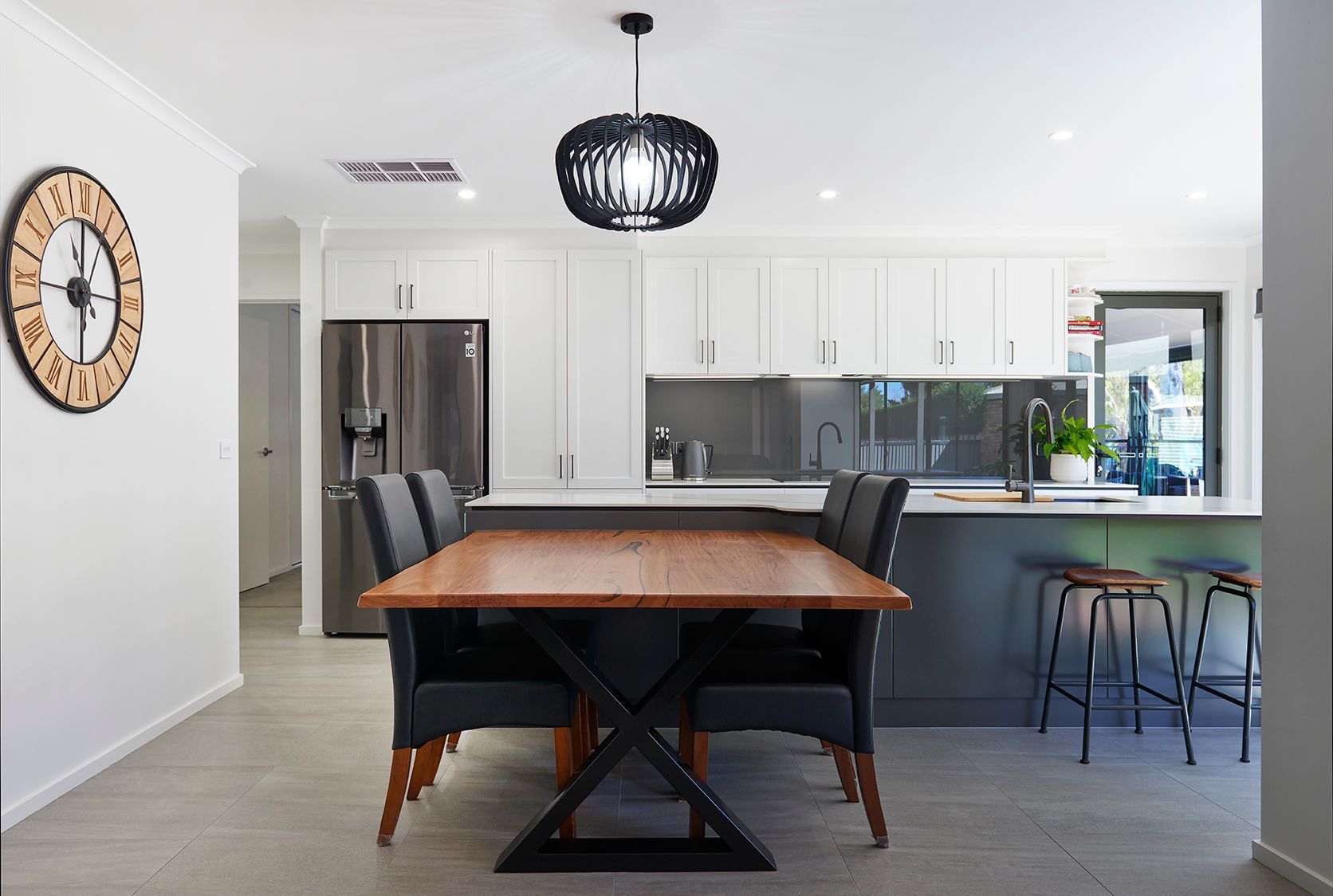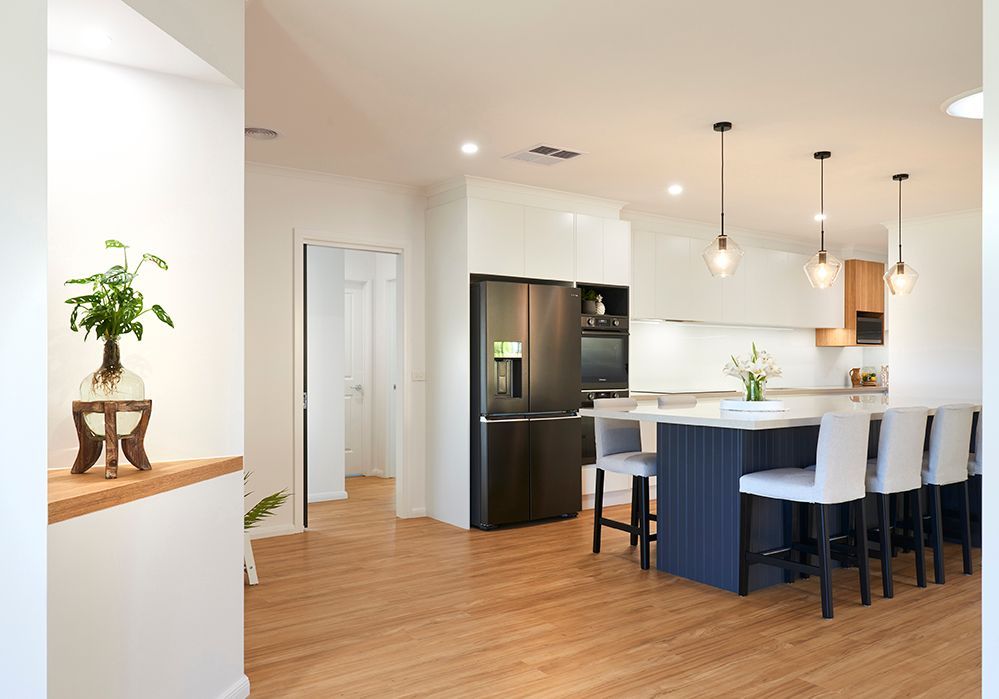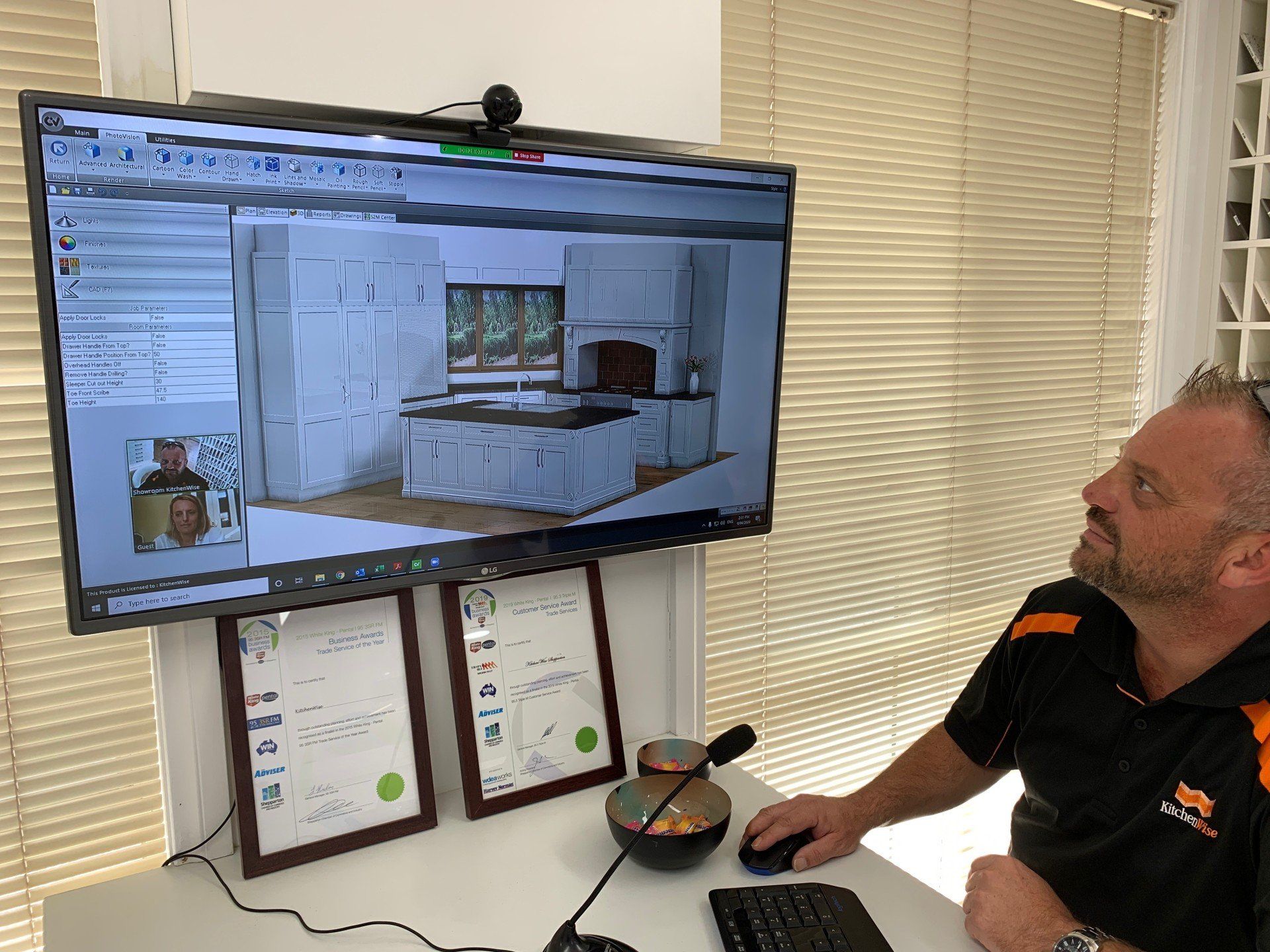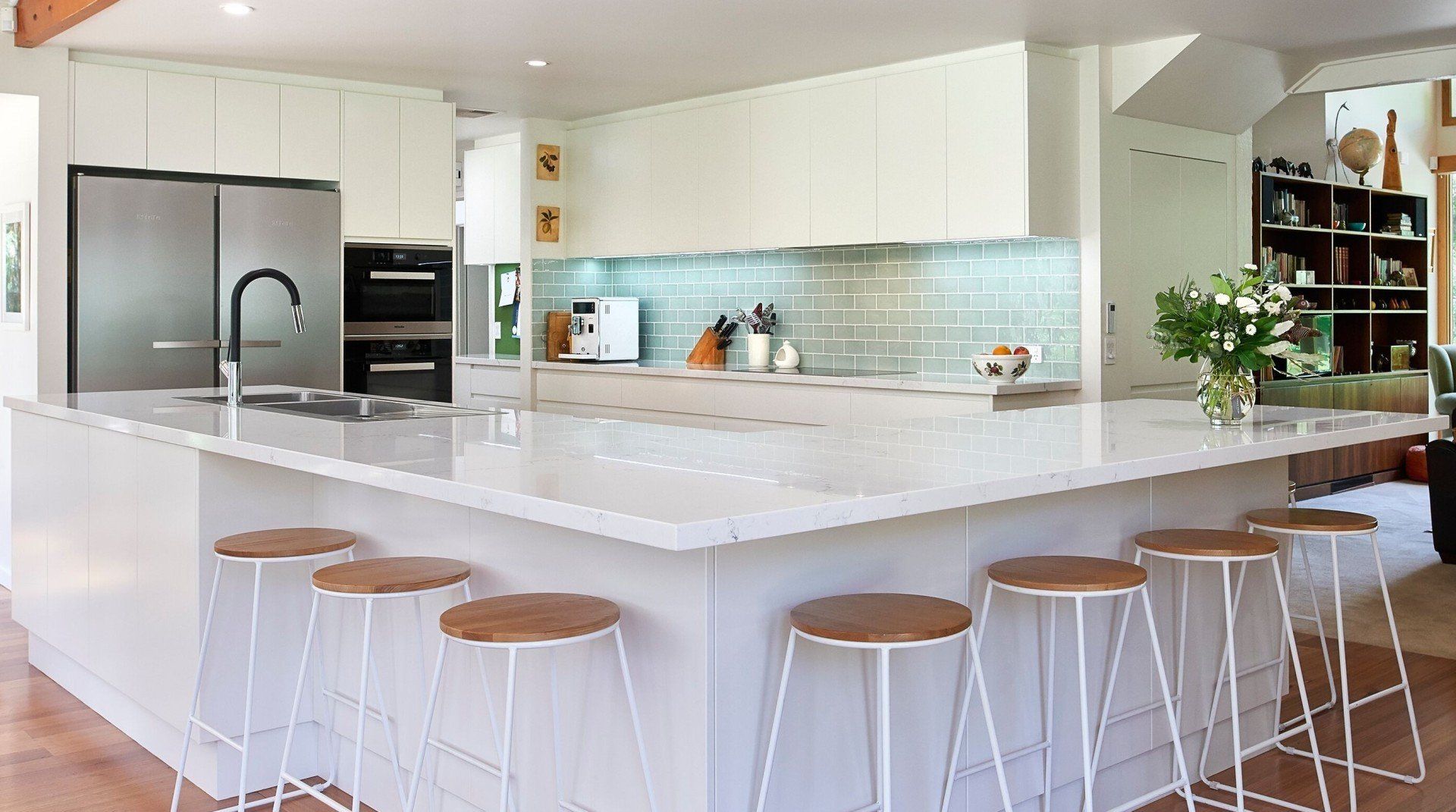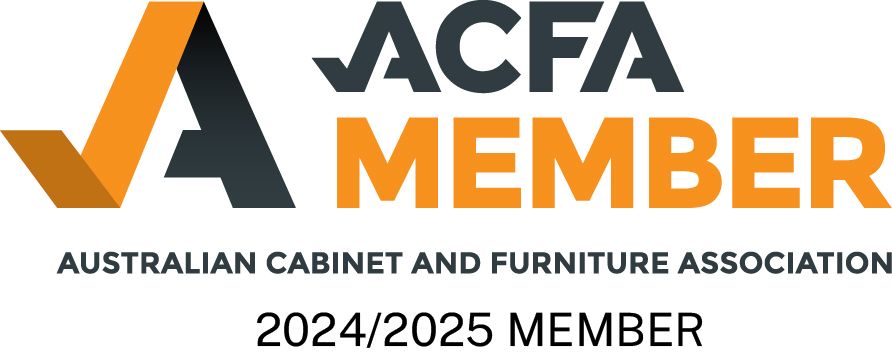Handleless kitchens
TO HANDLE, OR NOT TO HANDLE? THAT IS THE QUESTION!
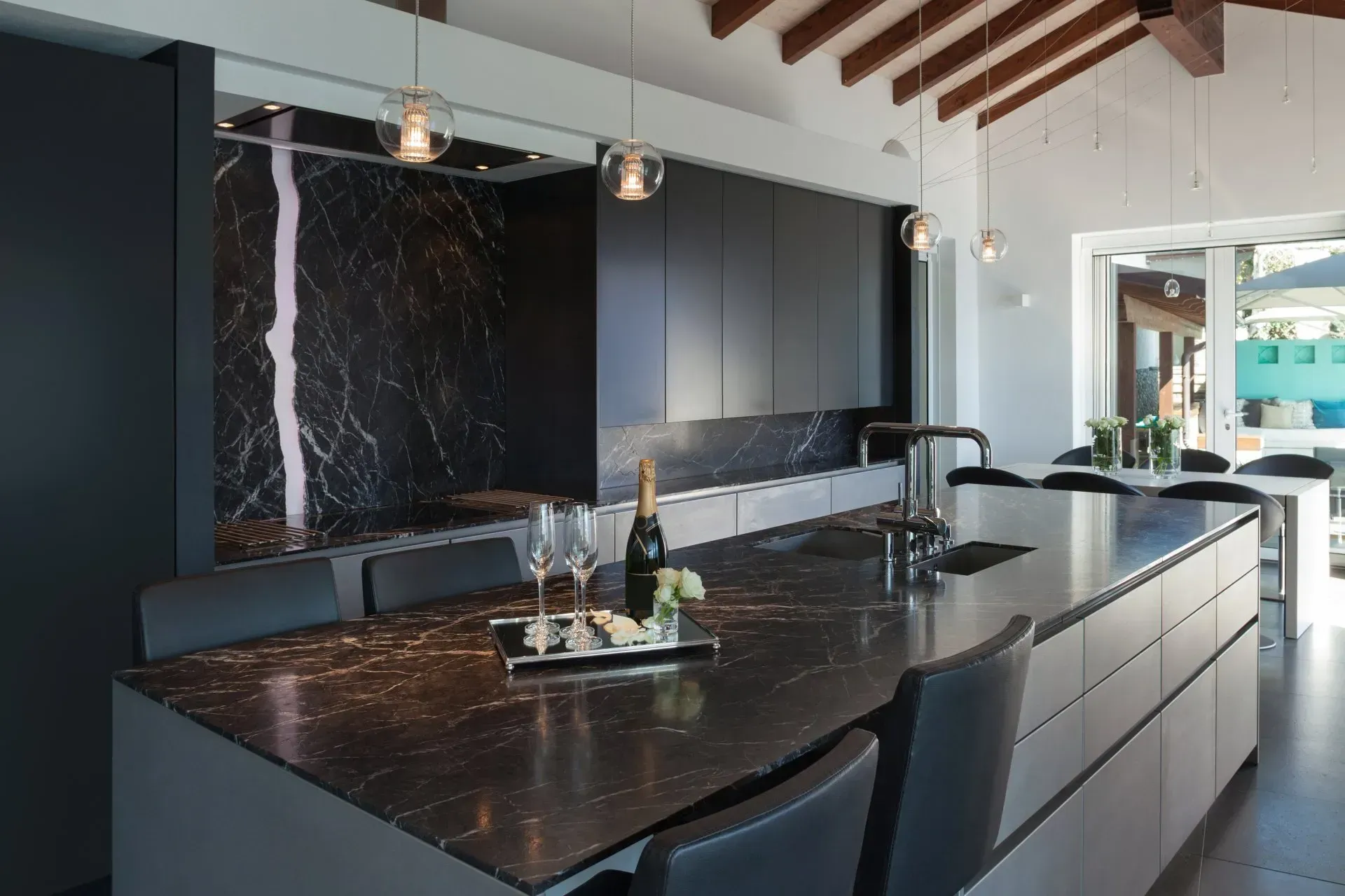
It hasn’t always been so, but these days one of the first questions we ask clients during their kitchen design consultation is, “Do you want handles?”
Where handle style was once the final point of discussion in kitchen style, the inclusion of handles is no longer a given, but a design choice.
While some people have their heart set on no handles, others may not even realise they are leaning towards a handleless design until stepping into our showroom.
For example, we have clients arrive with magazine or internet images of sleek, streamlined designs which inspire their dream kitchen.
“So, you want a handleless kitchen?” we ask, referring to their images.
While some have made a deliberate "no handles" decision, others reply in surprise “Oh, I didn’t even notice there weren’t any handles! I just liked the look.”
SLEEK, STREAMLINED STYLE
A handleless kitchen will give a modern, sleek and streamlined look. While there is a plethora of handle choices which also achieve a sleek, contemporary aesthetic, a handleless kitchen leans towards a minimalistic look.
The uninterrupted lines of a handleless kitchen will make a small kitchen look larger, and allow other design features, such as splashbacks and accessories, to stand-out without any competition.

A handleless kitchen promises a streamlined aesthetic.
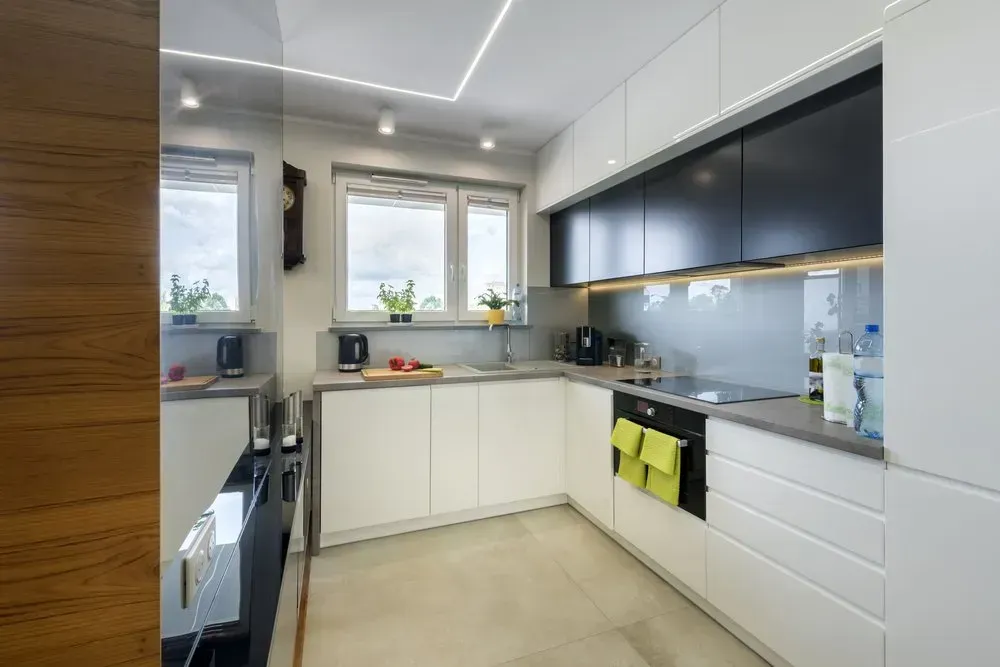
While handles don’t take up a lot of room, a small space can feel larger without them - and nobody will ever get their clothes hooked!
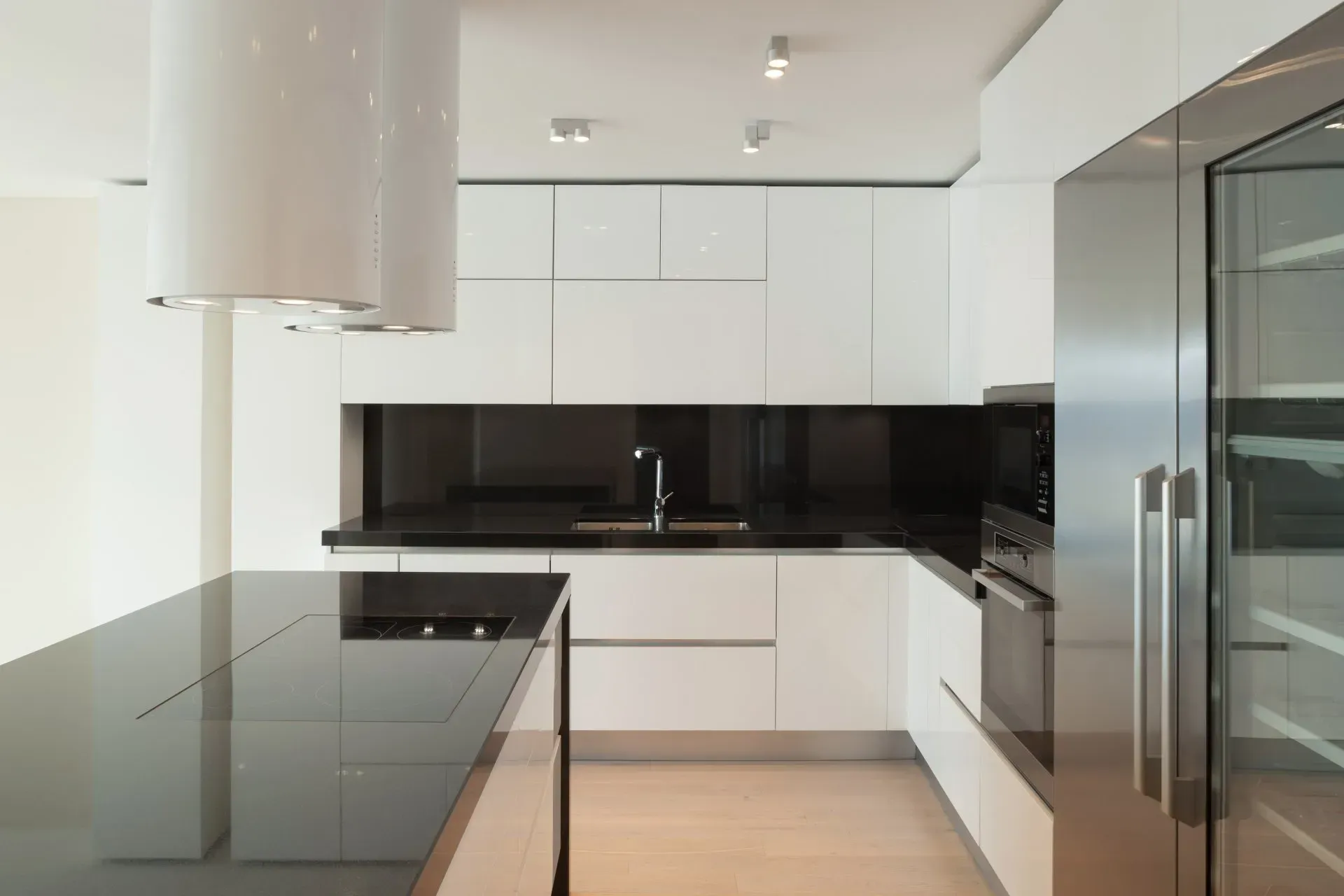
A handleless kitchen can achieve an ultra-modern finish.
HANDLELESS OPTIONS
There are two options in handleless cabinetry. These are:
- Touch to open – A light touch on the panel engages a spring mechanism inside the door/drawer to open it.
- Deep reverse bevel – A gap between the drawer fronts, at top of benchtop doors and at bottom of overhead doors, provides space for fingers to grip and open the panel.
Both handleless options have pros and cons which we help you navigate during your design journey and selection of cabinetry materials.
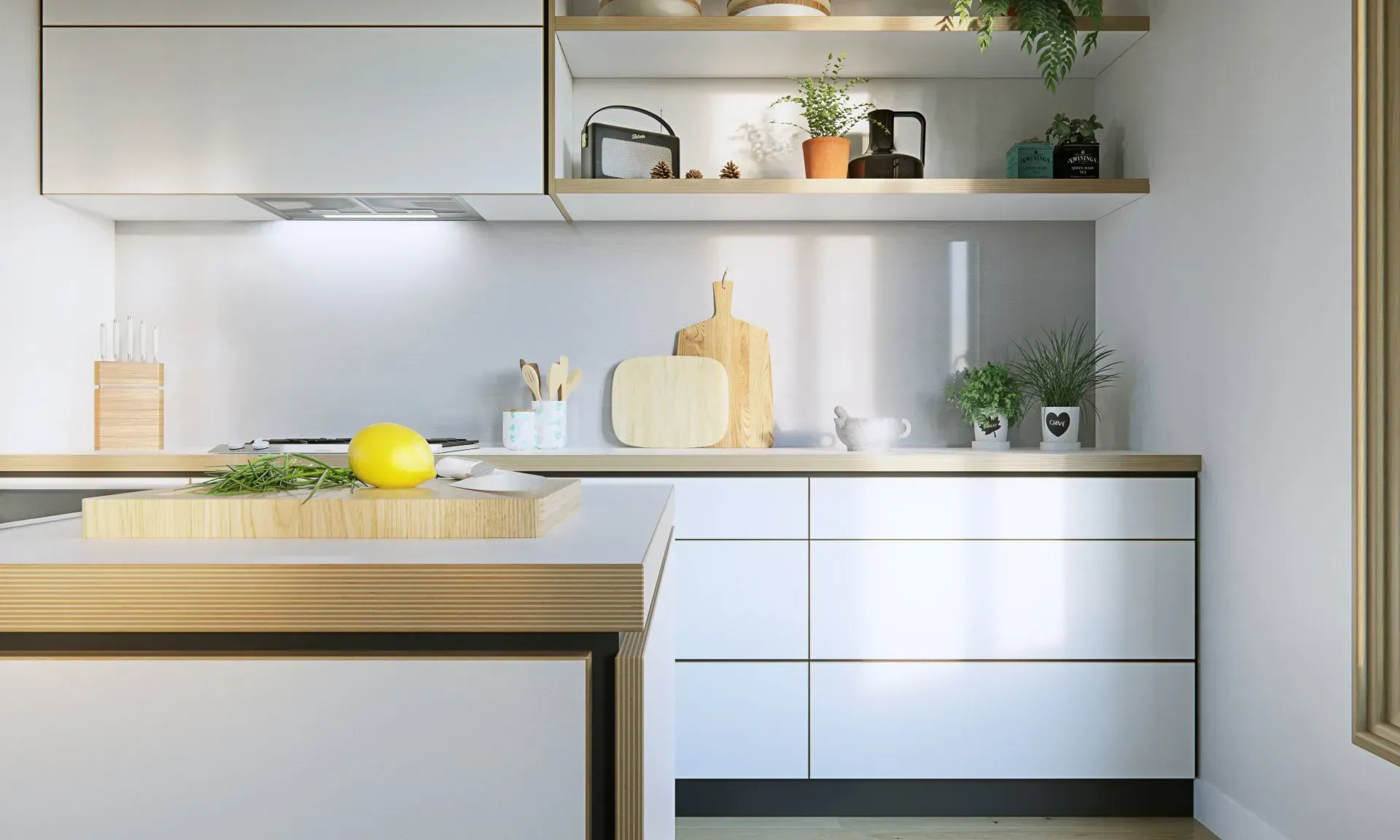
A touch-to-open handleless design. Image: Laminex
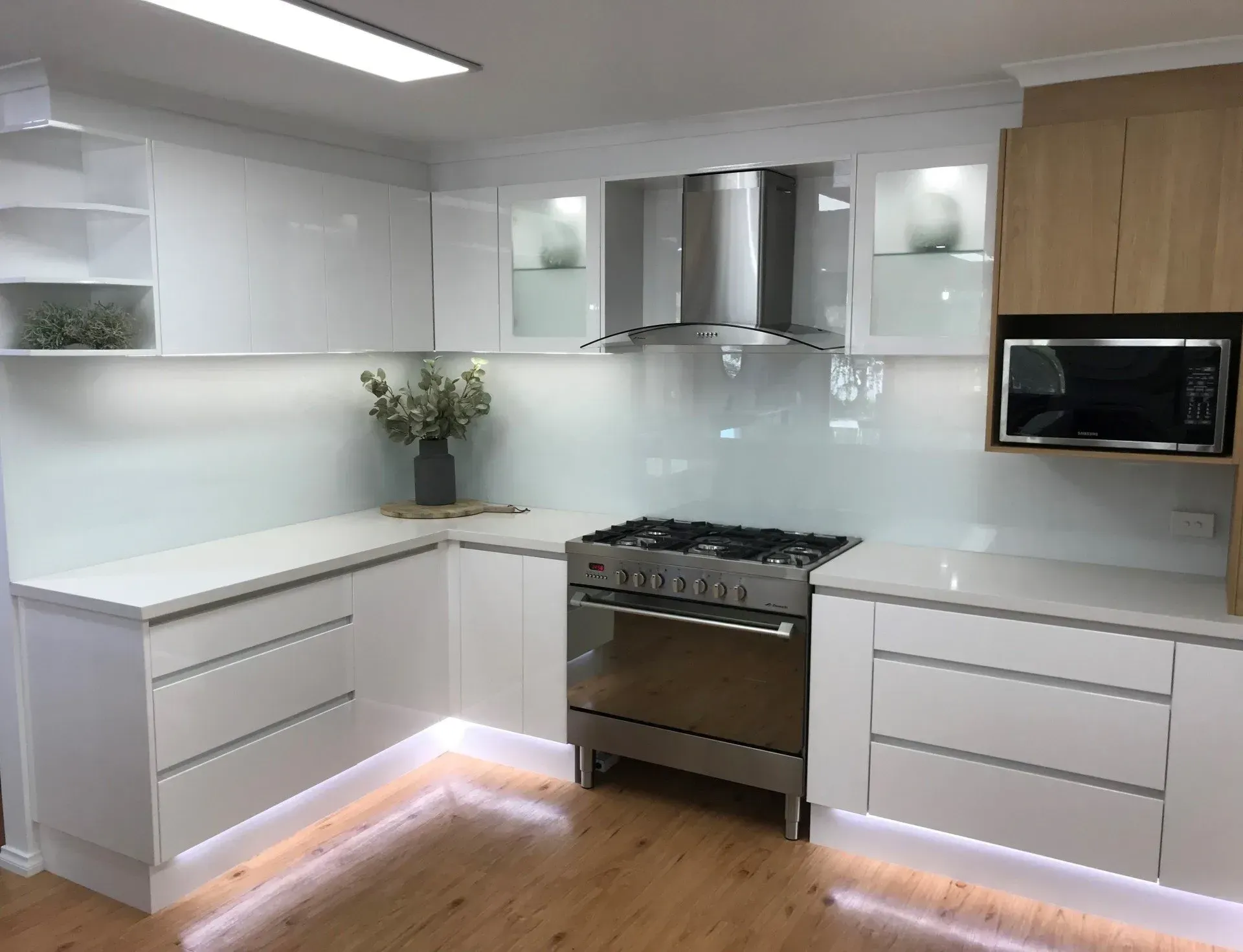
Deep reverse-bevel cabinetry enhances the clean lines of this KitchenWise design.
OPTION 1: TOUCH-TO-OPEN CABINETRY
PROS
- A clean, ultra-sleek, uncomplicated look which allows the use of many materials in finishes for doors and drawer fronts.
- Touch-to-open cabinetry lends itself to a flat panel, such as plain melamine or paint finish, with no profile (except on the edgework). While a perfect fit with flat panels, touch-to-open cabinetry also works well with some detailed profiles.
- Touch-to-open works with multiple colours in the one kitchen design, allowing you to easily introduce different products. For example, you can mix high-gloss paint finish doors with a timber grain to achieve a minimalistic, yet homely look.
CONS
- The need to lightly push a panel every time you want to open or close a door or drawer increases the likelihood of fingerprints or temporary marks from food, oils or other products on your hands.
- Long-term touching on cabinetry panels increases risk of scratches on doors and drawer fronts from fingernails, rings or bracelets. The good news is, there are products on the market, such as the Laminex Absolute Series, which are more resistant to scratches, fingerprints and food products. These are particularly popular with darker colours – but keep in mind these products are an upgrade from standard melamine, so will add to the overall cost of your kitchen.
- A door or drawer may follow you open if you lean on it while standing at the kitchen bench.
- The mechanisms used in touch-to-open cabinetry are more expensive than standard to mid-range handle options.
- When closing touch-to-open cabinetry, a push is needed to re-engage the spring mechanism, eliminating the option of soft-close drawers. (Something to consider if you have young children).
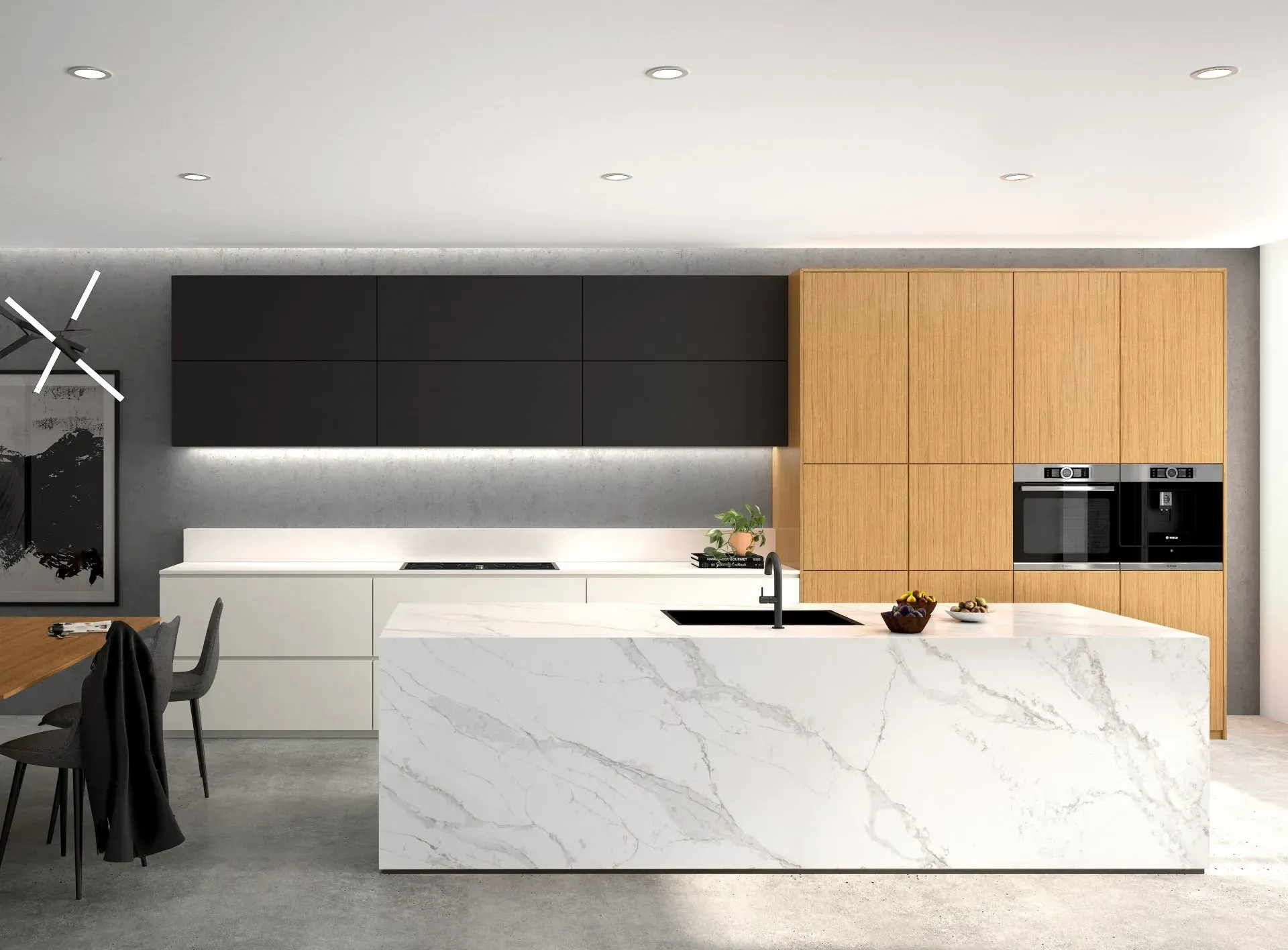
Handleless cabinetry accommodates the mixing of colours and materials. Image: Laminex

While often used with flat, non-profiled panels, touch-to-open doors and drawers also work with well-chosen detailed cabinetry.
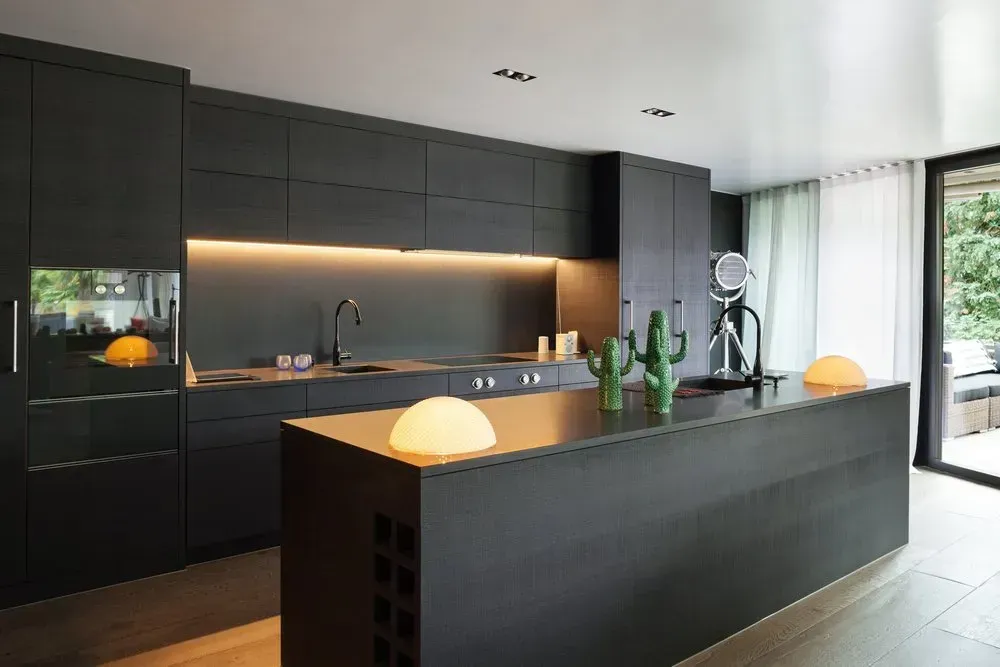
Dark colours are a popular choice in handleless kitchens, but can more easily show scratches, fingerprints or food transfer from hands. You can avoid this by upgrading to scratch- and mark-resistant materials, but this will increase the overall cost of your kitchen.
OPTION 2: DEEP REVERSE BEVEL
PROS
- A sleek, clean, uncomplicated look. It differs from the seamless finish of touch-to-open cabinetry, with the finger grooves creating visual gaps between drawers and door fronts.
- Allows for soft-close drawers.
- Overhead cabinets can revert to a touch-to-open option, or we can hang the doors down about 20mm below the carcass line to allow fingers to grip behind and open the cabinetry. This will reduce the amount of times you need to touch the face of the door, preventing wear and tear or hand/food marks on the door surface.
CONS
- You will lose some storage space to accommodate for the deep reverse bevel and its accompanying rail, which goes behind the door or drawer front so you don’t look inside the cabinet when it is closed.

Deep reverse bevels give sleek lines, with the finger grooves (as shown on these drawers) creating stylish 'gaps' between the cabinetry.

Deep reverse bevels create finger grooves for opening and closing cabinetry.
WHAT’S YOUR STYLE?
If you are already certain on a handleless kitchen, or still in the process of deciding on your style preference, the KitchenWise design team can expertly guide you in your choice. Our showroom is also brimming with handles for kitchens of all styles.
To book a design consultation, phone 5831 2077 or visit https://www.kitchenwise.com.au/contact
- Choosing kitchen handles: 8 things you need to get a grip on at
https://www.kitchenwise.com.au/choosing-kitchen-handles



